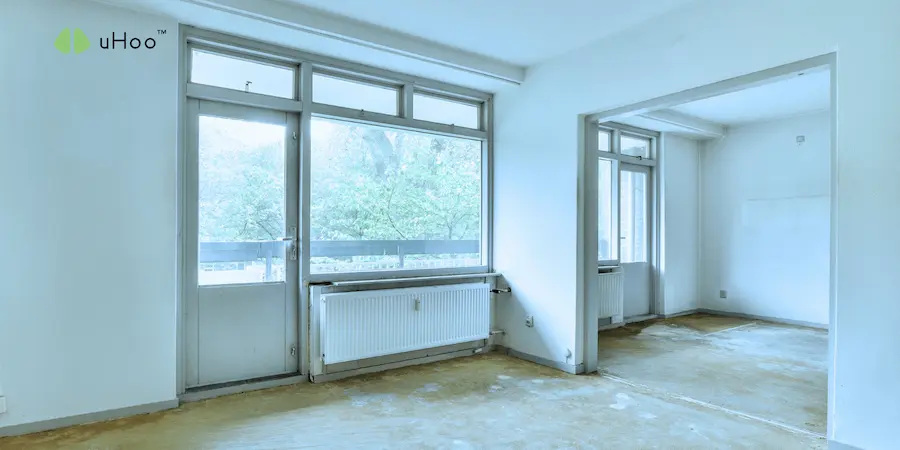When you think about improving your home’s air quality, “fresh air” usually comes to mind. The common impulse is to open windows, use exhaust fans, and promote air movement. While these actions are part of a healthy strategy, engaging in risks of uncontrolled air exchange can actually undermine your efforts, turning a seemingly beneficial practice into a source of hidden hazards.
The Risks of Uncontrolled Air Exchange: What You’re Letting In (and Out)
- Importing Outdoor Pollutants: This is perhaps the most critical risk. Uncontrolled air exchange means your home becomes a passive recipient of whatever is outside.
- Humidity and Moisture Damage: For homes in tropical climates, this is a pervasive risk. When hot, humid outdoor air flows unchecked into a cooler indoor environment, it drastically increases indoor relative humidity (RH) that could lead to property damage, dust mites, and mold and mildew. Learn more about mold via the uHoo Mold Index.
- Increased Utility Bills: Uncontrolled air exchange means your HVAC system (air conditioner or even a heater in cooler climates/seasons) has to work harder and longer to maintain desired indoor temperatures and humidity levels. You’re effectively conditioning the outdoor air that’s constantly leaking in, leading to substantial energy waste and inflated electricity bills. This is a direct drain on your wallet.
- Compromised Security: Leaving windows and doors open for extended periods, or having a very leaky building envelope, creates vulnerabilities that can be exploited, posing security risks.
- Noise Pollution: If your home is near a busy street or other sources of external noise, uncontrolled ventilation can introduce disruptive sounds, impacting peace and quiet.
The risks of uncontrolled air exchange highlight that the relationship between indoor and outdoor air is complex. It’s not simply a matter of “more is better.” A smart approach involves understanding what you’re exchanging, when, and how much, ensuring that your ventilation efforts truly benefit, rather than harm, your indoor environment.
To effectively navigate the risks of uncontrolled air exchange and optimize your home’s air quality, a uHoo air quality monitor is an indispensable tool. By providing real-time, comprehensive data on both indoor and relevant outdoor pollutants, humidity, and CO2, uHoo empowers you to make informed decisions about when to ventilate, when to rely on filtration, and how to maintain the perfect balance for a healthy and efficient home.

